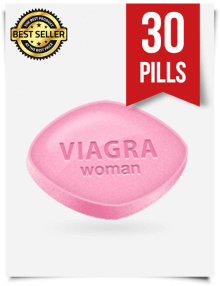“This is the biggest breakthrough in women’s sexual health since the advent of ‘the Pill’ for contraception”, The National Consumers League said in a statement.
After years of development and three successful clinical trials, women’s Viagra may be just what the doctor ordered for premenopausal women seeking to increase the fire in their relationships.
Accidental discoveries
Women Viagra is similar to traditional male Viagra in that both products were discovered by accident and later used to treat sexual dysfunction. Early on, Viagra was developed for men, with the end goal in mind to treat angina, a heart condition that constricts the vessels that supply the heart with blood. The manufacturer Pfizer soon realized that patients were reporting a curious side effect; increased blood flow to the penis. Soon after, the first erection pill was born.
After FDA approval, Viagra went on to see massive success as it helped men suffering from erectile dysfunction and premature ejaculation. Viagra was sold under a successful marketing campaign that offered millions of men their confidence back. The “little blue pill that could” soon had generic versions, like Cialis and Levitra, which contained sildenafil, Viagra’s active ingredient. It was sildenafil that researchers observed in the initial trials which failed to treat angina but caused the desired side effects that increased men’s sexual prowess.
Equaling the score of Addyi
Years after Viagra’s proliferation into a variety of generic Viagra versions, men had multiple options to choose from when faced with the option of improving their sexual health. Women, on the other hand, had none. Many women felt that although men had all these options, their sexual health was being neglected. The conversation around this topic was leaving out half of the population, and women waited in silence as men had all the fun. That is, until Boehringer Ingelheim, a German pharmaceutical company tested flibanserin on women and found, accidentally, that the drug increased sexual arousal.
Originally tested to treat depression, flibanserin functioned similar to a selective serotonin reuptake inhibitor (SSRI). SSRIs are typically used in patients exhibiting symptoms of chemical imbalances. Quite simply, SSRIs increase the neurochemicals in your body that make you feel good, like serotonin and dopamine – while inhibiting the bad neurochemicals that make your body feel bad, like cortisol and norepinephrine. Flibanserin failed to do this in the initial trials, but women reported feeling side effects like increased spontaneity with their partners, more willingness to engage in sex, and less discomfort when engaging in sex. For many women in long relationships, flibanserin rekindled the initial spark they felt when they first started dating their partner. In fact, some participants tested did not want the trial to end, as their sex life had become much better as a result of taking the pill.
Boehringer Ingelheim eventually sold the drug rights to Sprout Pharmaceuticals which went on to develop the pill into the women’s Viagra on the market today. Women Viagra contains the active ingredient flibanserin and is sold under the name Addyi. In this article, the three names will be used interchangeably.
Physical vs. psychological
A distinction must be made, however, between Addyi, prescribed for women, and Viagra, prescribed for men. Each drug affects its intended recipient differently. Where men typically have trouble enjoying sex at the physical level, women have trouble enjoying sex at the cerebral level. Viagra assists men’s sexual performance by mending physiological issues like erectile dysfunction and premature ejaculation. Yet the problems most women face in the bedroom are not physical, but psychological. Women’s bodies react just fine, yet the desire for sex just isn’t there. Women’s dysfunctions are not due to a lack of blood flow to the genital area, but a mental block that is more difficult to pin down. “You can send blood flow to my vagina all day long and that’s not going to make me want to have sex. My problem is that my brain doesn’t feel desire,” said Amanda Parrish, one of the first users of Addyi.
After years of marriage, Parrish found that something was missing in the relationship with her husband. “Before, I’d been an active initiator—flirty, playful, and frisky. But now, there was a lack of oomph and interest. I found myself trying to be asleep before he came to bed and avoiding those intimate times. It wasn’t that when we were together, things weren’t great, because they were. I don’t have an arousal problem, and it’s not that I don’t enjoy sex or that I don’t orgasm. From my neck down, my body responds perfectly. What’s missing is the lack of desire to start. I became an obligatory participant instead of an initiator,” said Parrish.
Low desire and women Viagra
Like 10-20% of women in the United States, Parrish had Hypoactive Sexual Desire Disorder (HSDD). Patients with HSDD are characterized by a lack of sexual desire, fantasies, and a reduced sexual appetite. They are less likely to initiate or respond to their partner’s sexual activity. Women are more likely to suffer from HSDD than men. If a clinician determines that the interpersonal difficulties experienced in the bedroom are not a result of a mental disorder, drug use, or other medical condition (like depression) then the patient might have HSDD.
In the past, testosterone was explored as an alternative medication to get women in the mood, but failed to produce consistent results. Multiple herbal and natural treatments claimed to help, but none were verified by the FDA. Addyi is unique in that it is the only FDA-approved treatment of HSDD. Before its approval the disorder was often left untreated, and the conversation centered around this issue never happened. “It validates women’s right to treatment for sexual problems and their right to sexual health,” says Sheryl Kingsberg the chief of behavioral medicine at MacDonald Women’s Hospital. Sprout Pharmaceuticals brought this issue to the forefront of society by introducing a pill that could potentially save relationships and marriages by not letting the fire – which is so crucial to communication – fizzle out.
In three clinical trials Addyi was found to significantly improve women’s overall sexual function, and sexual distress associated with low sexual desire. At the end of the studies, more women receiving Addyi considered their condition to have improved, and to have experienced a meaningful benefit from Addyi, than those who had received placebo. Before going more in depth as to how the studies were carried out, it is imperative to ask some questions about sexuality in general.
Sex 101
When it comes to sex, why is there a difference between men and women? Why do women need a pill for desire while men need a pill for performance? Why do researchers consistently find that women’s desire tapers off quicker than men’s? And finally, why are women more likely to suffer from HSDD than men? Different explanations exist that shed light on these important questions. Evolutionary psychology gives us a starting point in understanding some of the answers to these questions, but ultimately falls short.
Me man, you woman. Me like
If evolutionary psychology is to be believed, men are taught by evolution to breed widely, whereas women are taught breed wisely. Men, acting the part of their caveman ancestors, wish to engage in sex with as many female partners as possible so as to propagate the human race and avoid species-wide extinction. Impelled forward by this innate animalistic desire to pass on his genes, man sows his seed like Johnny Appleseed, hoping to impregnate as many women as possible. Evolutionary theory paints man with a wide brush, and assumes that his wandering eye will always lead to lasciviousness.
Similarly, it paints women with a narrow brush, and assumes they have no choice in the matter. Evolutionary theory sees women as defenseless baby factories, tied down to the man who impregnates her, relatively powerless when it comes to choosing partners or resisting sex. Once her role of birthing children is complete (her way of passing on the genes), a mother will lose her desire for sex once she has had the maximum number of children she can naturally care for. Provided her partner provides resources and assists in the raising of the children, a woman will lose her desire for sex once her evolutionary duty has been done. Her genetic lineage is secured, and sexual behavior diminishes because she does not need to get pregnant anymore.
Men, meanwhile, are insatiable, as he can never have too many kids.
It is safe to say that this explanation might not be appropriate in the year 2016. As a science, evolutionary psychology provides a convenient ad-hoc explanation with little verifiable evidence. We do not know if this is the exact way cavewomen behaved. Fossils do not tell us of their behavior. Secondly, it places too much of an emphasis on the importance of passing on one’s genes. In the modern world, pregnancy is not synonymous with sex. Parrish, who was brought up in a conservative home was taught by her parents that “sex is about procreation not recreation.” This maxim has changed. We now see homosexuals, asexuals, as well as straight couples that are refusing to have children. Having a child is a choice, albeit an expensive one, and a vocal majority of people are choosing not to have them.
Technology, in the form of contraception, has allowed couples to enjoy the pleasure of sex without the worry of pregnancy (99.9% of the time at least). Recreation or procreation, you can still have one without the other. So much for Johnny Appleseed.
Thirdly, this explanation does not take into account women who do not have children, but still suffer from HSDD. If having children stops a woman’s desire for sex, then what of the women who are not mothers? Why do as many as 10 to 20% of the premenopausal female population suffer from HSDD?
Women use their brakes. Men accelerate
Neuroplasticity and sociology bring us closer to the answer. These theories state that a man’s neural pathways that link up parts of the brain responsible for thinking and acting out sex are stronger than the neural pathways of a woman. Men’s behavior is reinforced more strongly when it comes to seeking sex, engaging in sex, and initiating sex. The exposure he had to traditional gender roles growing up as a child ensure that sex will be on his mind more so than his female counterpart. Her neural pathways are not as active, as men are traditionally the ones seeking sex from women, not the other way around. Many cultures still raise women to be shy or silent around the subject of sex. What that means at the neurological level is that it is more difficult for women to ‘think sexy thoughts’ just as it is easier for men to think them.
A good analogy that illustrates neuroplasticity is that men have stronger ‘accelerators’ while women have stronger ‘brakes.’ Sex 101 classes confirm that it takes less time to stimulate a man sexually than it does to stimulate a woman. While men take just 2 minutes to orgasm, it can take most women up to 20 minutes to orgasm. Women’s engines are slower to start up than men’s. Women are also more likely to pump their brakes faster and call a halt to activity. The presence of a negative stimulus like dirty sheets, unpleasant smells, or the possibility of being interrupted make it especially difficult for women to keep her mind on sex. With more things to worry about that can set her off, and a weaker neural map that makes it difficult to ‘think sexy thoughts’ women often end up braking, while men keep accelerating.
Aging introduces another tricky variable when it comes to explaining HSDD in women. Since women’s neural pathways are not as reinforced when it comes to thinking about sex, as she gets older, these pathways, which have not been stimulated frequently to begin with, start to wither. Contrariwise, men, who have received a lifetime of ‘accelerator training’ have their neural pathways degrade at a much slower rate. It is a common sight to find couples that have been together for 10 years where the husband still lusts after his wife, while the wife does her best to avoid him.
Penny for your thoughts?
It is a commonly held belief in marriage counseling that if that if you put a penny in a jar for the first year you have sex, and then proceed to take a penny out of that same jar every year afterwards every time you have sex, you will never empty the jar. The sad part is that sex is important for the bonding between partners. If a woman still loves her husband, but does not feel an urge to be with him physically, he may feel as though she is giving him the cold shoulder. The romance will suffer as a result of her reduced desire – which, ultimately, may not be entirely her fault.
BEGONIA, DAISY, and VIOLET
Women’s Viagra, developed after three successful trials, may give women with HSDD hope. The BEGONIA, DAISY and VIOLET trials tested premenopausal heterosexual women with an average age of 36. Studies were randomized and double blind to include an experimental group (that received flibanserin) and a control group (that received placebo – a sugar pill with no medical effect).
Participants were required to keep a journal documenting their progress and symptoms. The researchers looked to see that the participants improved using the qualitative data recorded in the journals as well as the data collected through the Female Sexual Function Index (FSFI). The FSFI was used by clinicians to diagnose HSDD. The FSFI is a “sexual symptom checklist that includes six dimensions: desire, arousal, lubrication, orgasm, satisfaction, and pain,” said Molly Katz, the lead researcher in the BEGONIA trial.
Questions were asked such as “How is your condition today compared with when you started study medication?” and “Overall, do you believe that you have experienced a meaningful benefit from the study medication?” The FSFI was given at weeks 0, 4, 8, 16, and 24 and attempted to measure the psychological health of participants as well as change in sexual activity.
An increase in total FSFI score was observed between flibanserin and the placebo. Women saw decreased levels of sexual distress as well as distress associated with low sexual desire. Both groups reported an increase in the amount of sexual activity with their respective partners, although the experimental group reported higher incidents of sex than the placebo group.
Results
Women may be able to see an increase in romance as a result of taking Addyi. Researchers are quick to caution, however, that as with any medication, side effects are common. The most common side effects participants experienced were dizziness, nausea, fatigue, sleepiness, and trouble sleeping. Doctors warn women not to take Addyi with alcohol or other medications as it can cause a serious interaction. As always, women should consult a certified health care professional before obtaining approval to purchase the daily 100mg prescription. If no change is observed after 6 weeks of taking the medication, dosage should be suspended.
Unblocking the emotions
Deepak Chopra once said that “sex is always about emotions. Good sex is about free emotions; bad sex is about blocked emotions.” Before exploring the medical option, women should try communicating with their partners. Life moves fast, and situations between couples are sometimes swept under the rug. In this busy world, it is difficult for men and women to find the time to genuinely talk to one another, clear the issues, and be on the same page. Lovers that communicate and share emotions in a transparent and empathetic way will have good sex.
But when communication is not enough, something extra might be needed to open up the emotions that have become hardened and cloistered by time. Women Viagra (Addyi) offers a biological solution for women that feel as though they may be exhibiting symptoms of HSDD.
In closing this article, Amanda Parrish testifies on her experience using Addyi:
It was like filling back up a half-empty glass of water. It brought me back to where I was. Before long, I was the one suggesting we skip dessert and go back home to bed.
The quality of our sex during the trial was much different. I was taught that for sex, men need a place, and women need a reason. But what I found was that Ben responded differently to me when he knew I wanted him. It turned him on in a different way, and watching his reaction turned me on, too.
We were also finally talking openly about sex. I think this intimacy saved our relationship. That’s why I’m so passionate about this pill and have testified about it before the FDA. There are so many couples that don’t talk about sex and don’t realize what’s wrong. They think that once they’re 50, they’re done. I’m 52. I don’t want to think that I’m done wanting to have sex.
REFERENCES
Basson, Rosemary, Miriam Driscoll, and Shauna Correia. “Flibanserin for Low Sexual Desire in Women: A Molecule From Bench to Bed?.” EBioMedicine 2.8 (2015): 772-773.
Gellad, Walid F., Kathryn E. Flynn, and G. Caleb Alexander. “Evaluation of Flibanserin: Science and Advocacy at the FDA.” JAMA 314.9 (2015): 869-870.
Parrish, Amanda. “Here’s What It’s like to Take ‘Female Viagra'” Time, 17 June 2015. Web.
Puppo, Giulia, and Vincenzo Puppo. “US Food and Drug Administration Approval of Addyi (Flibanserin) for Treatment of Hypoactive Sexual Desire Disorder.” European Urology (2015): n. pag. Web. 22 Nov. 2015.
Simon, James A., Sheryl A. Kingsberg, Brand Shumel, Vladimir Hanes, Miguel Garcia, Jr., and Michael Sand. “Efficacy and Safety of Flibanserin in Postmenopausal Women W… : Menopause.” Menopause 21.6 (2014): 633-40. Web. 22 Nov. 2015.
“U.S. Food and Drug Administration.” FDA Approves First Treatment for Sexual Desire Disorder. N.p., n.d. Web. 22 Nov. 2015.

 Pink Female Viagra 100 mg 30 Pills
Pink Female Viagra 100 mg 30 Pills Trial Free Cialis 20 mg 10 Samples
Trial Free Cialis 20 mg 10 Samples Samples of Viagra 100 mg 10 Pills for Free
Samples of Viagra 100 mg 10 Pills for Free Free Levitra Trial Pack 10 x 20mg
Free Levitra Trial Pack 10 x 20mg